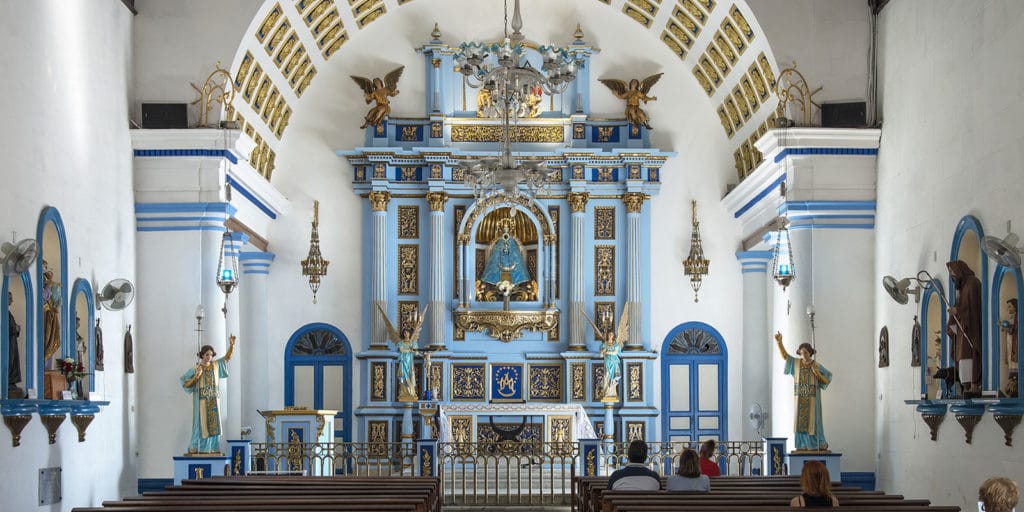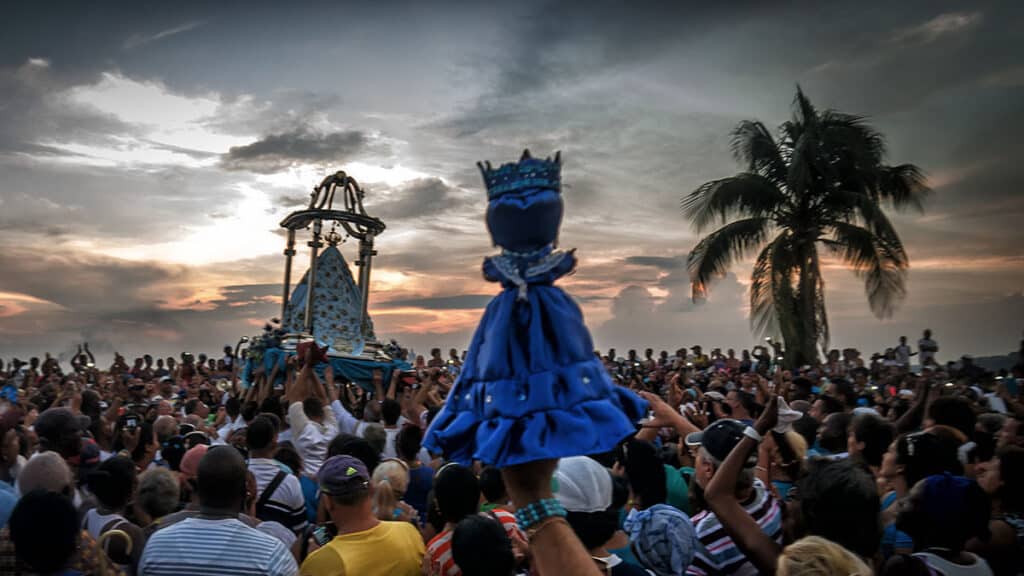Our Lady of Regla is a miraculous image of the Virgin Mary venerated in:
- Regla, Havana, Cuba 🇨🇺
- Lapu-Lapu City, Cebu, Philippines 🇵🇭
- Chipiona, Andalusía, Spain (near Cadíz) 🇪🇸
Virgin of Regla in Cuba

In Cuba, the Virgin is venerated at the Iglesia de Nuestra Señora de Regla, (Church of Our Lady of Regla) in Regla, Havana, Cuba. Regla is an Afro-Cuban neighborhood famous for its music.
Her feast day is September 7. Every year the faithful gather for a procession.
The easiest way to get to Regla is by boat from Terminal de Ferris, the maritime terminal in Old Havana. The church is a short walk away.
Association With Yemayá

This festival is really a festival of Yemayá. She is mother earth, the mother of us all. She is the mother of the children who are fish. A woman’s amniotic fluid is a lot like sea water. So that would be us. If you need a comparison, Yemayá is The Virgin Mary.
Rivers give life. In Yorubaland, she is the Orisha of the Ogun River, the big river in Yorubaland.
Her association with the sea in Cuba and the Caribbean comes from her association with Olokun who reigns in the deep water. So many lost their lives in the realm of Olokun, that people turned to Yemayá for comfort, just like you turn to your mom for comfort.
In Caribbean Orisha faiths, Yemayá is syncretized (blended) with Our Lady of Regla.
People get wrapped in images and traditions, but it’s not the images that are loved. These are natural energies of Mother Earth. They are everywhere and have different names and traditions in different places and communities. There is no difference between Mother Earth, Yemayá, Our Lady of Regla, and the Virgin Mary. They are all the same thing.
By the way Regla, Cuba is one of the centers of the musical and dance traditions that evolved into salsa in New York City.
Virgin of Regla in Spain
Our Lady of Regla is venerated at the Santuario de Nuestra Señora de Regla de Chipiona (Sanctuary of Our Lady of Regla of Chipiona). The church is near Cádiz, the main Andalusían Atlantic port where Spanish explorers and treasure galleons sailed to the Americas. Her feast is September 8.
Legends claim the venerated statue was commissioned by Saint Augustine, (354-430), an African Christian philosopher from what is now Algeria.
When the Vandals took over North Africa, the statue was brought to Chipiona, Spain. During the Moor’s conquest of Spain, the image was hidden in a well. It was rediscovered several hundred years later through a vision. The statue’s survival of the Vandals and then the Moors were considered miraculous.
Virgin of Regla in the Philippines
Our Lady of Regla is venerated at the Our Lady of the Rule Church in Lapu-Lapu City, Mactan Island, Cebu, Philippines. Her feast is celebrated on November 21.
The Madonna is a copy of the original in Chipiona, Spain. She is carved from dark Philippine hardwood.
The devotion began in 1735 when the parish priest showed the faithful a painting of Our Lady. He was an Augustinian monk who served at Nuestra Señora de la Regla in Chipiona, Spain. The faithful accepted her, put a picture of her on the altar and miracles followed.
She received her canonical coronation on November 27, 1954.
